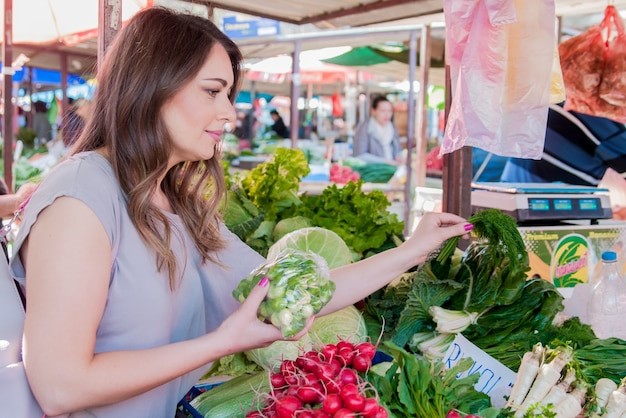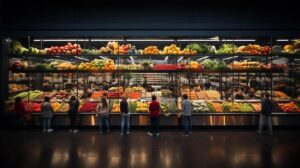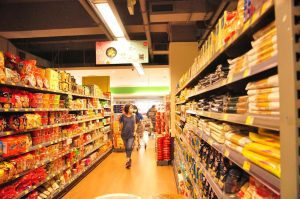Understanding seasonal trends in wholesale food purchasing is important for anyone involved in the food industry. These trends dictate what foods are available at different times of the year, influencing prices, availability, and demand. In the UK, the changing seasons significantly affect what can be grown and harvested locally, impacting what wholesalers can supply to retailers and ultimately what consumers find in their shops. This blog explores how these seasonal changes shape the food industry, highlighting the challenges and opportunities they present. By examining the impact of seasonality on wholesale purchasing, we hope to provide valuable insights for businesses looking to optimize their strategies and adapt to the ebb and flow of the market throughout the year.
Understanding Seasonal Trends
Seasonal trends in food purchasing refer to the predictable changes in the availability, demand, and price of food products throughout the year, influenced by the natural growing cycles of different crops and livestock. These trends dictate what foods are in abundance at various times and which are scarce, shaping the purchasing decisions of wholesalers, retailers, and consumers alike.
- Importance of Seasonality in Agriculture and Food Production
Seasonality is fundamental to agriculture and food production, as it determines the periods when specific crops can be planted, grown, and harvested. Farmers rely on seasonal patterns to plan their activities and optimise yields, while producers and processors adjust their operations based on the seasonal availability of raw materials. Understanding these cycles helps ensure the efficiency and sustainability of the entire food supply chain.
- Historical Perspective on Seasonal Food Trends in the UK
Historically, the UK has experienced distinct seasonal trends due to its temperate climate, which supports a variety of crops and livestock at different times of the year. For centuries, these patterns influenced traditional British diets, with people consuming fresh produce during its natural season and preserving excess for the off-season. Modern advancements in technology and global trade have somewhat blurred these lines, but seasonal trends remain a significant factor in the food industry.
Seasonal Trends in the UK Food Industry
In the UK, each season brings its own unique set of produce:
Spring: Known for fresh greens like asparagus, peas, and early strawberries.
Summer: A time of abundance, with berries, tomatoes, and leafy vegetables at their peak.
Autumn: Characterised by root vegetables, apples, and squash.
Winter: Limited fresh produce, but hearty vegetables like potatoes, carrots, and cabbages are prevalent.
- Specific Examples of Seasonal Foods and Their Peak Times
Strawberries: Peak in summer, especially June and July.
Root Vegetables: Such as carrots and parsnips, are best in the autumn and winter months.
Asparagus: Typically, available in late spring.
Cultural and Traditional Influences on Seasonal Food Consumption in the UK
British culinary traditions heavily reflect seasonal availability. For example, Christmas dinners often feature root vegetables and Brussels sprouts, which are in season during winter. Spring and summer bring lighter dishes with fresh salads and berries, while autumn sees hearty stews and pies made from the season’s harvest.
Impact on Wholesale Food Purchasing
Wholesalers must anticipate the peaks and troughs in supply and demand to maintain a steady flow of goods. They plan months in advance, working closely with farmers and producers to secure contracts for seasonal produce. Effective planning helps manage inventory levels, reducing waste and ensuring that retailers receive a consistent supply of fresh products.
- The Role of Forecasting and Market Analysis in Anticipating Seasonal Changes
Wholesalers use historical data, weather patterns, and market trends to predict which products will be in demand and when. This allows them to make informed purchasing decisions and adjust their strategies to meet market needs.
- Examples of Seasonal Purchasing Strategies Used by Wholesalers
One common strategy is forward contracting, where wholesalers agree to purchase a certain amount of produce in advance at a set price. This helps mitigate price volatility and ensures a reliable supply. Another approach is diversifying sourcing options, including local and international suppliers, to cover seasonal gaps.
Challenges of Seasonal Trends
Seasonal trends pose significant challenges to the supply chain, particularly in terms of transportation and storage. Fresh produce often requires special handling and quick turnaround times to maintain quality, which can be difficult to manage during peak seasons. Additionally, some seasonal products may need refrigeration or other storage solutions, adding complexity and cost to the supply chain.
Price Volatility and Economic Impact on Wholesalers and Retailers
Seasonal fluctuations in supply can lead to price volatility, affecting both wholesalers and retailers. When certain products are in high demand but low supply, prices can soar, squeezing profit margins. Conversely, during periods of surplus, prices may drop, leading to potential losses.
The Effect of Climate Change on Traditional Seasonal Patterns
Climate change is increasingly disrupting traditional seasonal patterns, making it harder to predict and plan for seasonal trends. Unpredictable weather events, changes in growing seasons, and shifting temperatures can all impact the availability and quality of produce, posing significant risks to the food industry.
Benefits of Seasonal Trends
- Opportunities for Wholesalers to Capitalise on Peak Seasons
Peak seasons present opportunities for wholesalers to capitalise on high demand. By promoting seasonal produce, wholesalers can boost sales and build strong relationships with retailers who rely on timely deliveries of fresh, in-season products. Marketing seasonal produce can also attract consumers looking for the freshest and most flavourful foods.
- Advantages of Promoting Seasonal Foods (e.g., Sustainability, Local Economy Support)
Promoting seasonal foods supports sustainability by reducing the need for long-distance transportation and storage, which lowers the carbon footprint. It also encourages consumers to buy local, supporting farmers and the local economy. Seasonal eating is often associated with better nutrition and flavour, making it a win-win for all parties involved.
Strategies for Managing Seasonal Trends
Wholesalers can adopt several best practices to align their purchasing strategies with seasonal trends:
- Building strong relationships with local farmers to secure early access to seasonal produce.
- Implementing flexible contracts that allow for adjustments based on seasonal availability.
- Investing in technology and data analytics to enhance forecasting and decision-making.
Technological Tools and Data Analytics in Managing Seasonal Purchasing
Technological tools and data analytics play a vital role in managing seasonal purchasing. Advanced software can track trends, forecast demand, and optimise inventory. Tools like AI and machine learning help wholesalers predict seasonal patterns more accurately, allowing them to make better-informed purchasing decisions.
The Potential Impact of Global Trade on UK Seasonal Food Trends
Global trade continues to influence UK seasonal food trends. While it offers the benefit of year-round availability of certain products, it also introduces competition and price pressures. Wholesalers must balance the benefits of global sourcing with the desire to support local, seasonal production.
- Predictions for How Seasonal Trends Might Evolve in the Next Decade
In the next decade, seasonal trends are likely to evolve with advancements in agricultural technology and changes in consumer behaviour. Innovations in farming, such as vertical farming and hydroponics, could extend growing seasons and reduce dependence on traditional seasonal cycles. Additionally, increasing awareness of sustainability issues is expected to drive a stronger preference for seasonal and locally sourced foods.
Read More: The Future of AI and Automation in the Retail Industry
Conclusion:
In summary, understanding and adapting to seasonal trends in wholesale food purchasing is vital for food business owners in the UK. These trends significantly influence the availability, demand, and pricing of produce, impacting your supply chain and ultimately your customers’ satisfaction. By planning for seasonal fluctuations, using forecasting tools, and promoting seasonal foods, you can overcome challenges and seize opportunities during peak periods. Embracing these trends not only enhances your business outcomes but also supports sustainability and the local economy. We encourage you to leverage the insights from this blog to refine your purchasing strategies and optimise your operations throughout the year for better business success.





